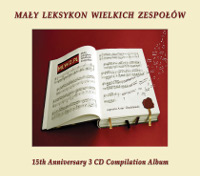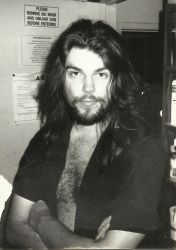 So what age were you when you met Tim, how did you meet and how did you get so heavily involved in the album. What had you been working on in the months prior – Did that in itself have an impact on this?
So what age were you when you met Tim, how did you meet and how did you get so heavily involved in the album. What had you been working on in the months prior – Did that in itself have an impact on this?
- Tim was just wrapping up ‘Yesstories’ (Kev – Tim is an accomplished author as well as musician), so I think it was around ‘95 or ‘96. That would make me 31 or 32. We met through Mike Varney at Shrapnel Records. At the time, Mike and I were talking about doing something of mine I was working up, but I needed more to do. This was back when I thought I could turn out a Prog album in 3 months. So, I wanted two more artists and I was also doing some scouting or rather checking out ones that Mike would put me on to. I had met about five fine cats through this, but I kept wanting them for my project! :-D Tim was one I met who was already writing and working with musicians.
I drove out to see and at first I passed. Later in that week, my wife Darla asked me why did I pass on Tim. When I began answering, it was then I realized I had not passed on him, it was just the band. I called back to see if he’d be interested in coming out to the studio to discuss the possibility of working together on what he had in mind. This meeting went well. It was the first time he heard some bits I was working on that ended up on his second album we’d do together and some I’m working on for my 2nd as well.
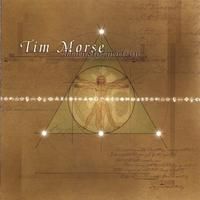 Tim was able to articulate very well to convey where he was coming from and also illustrated on piano what had been written so far, which was a large body of music to work with. The degree of involvement for my part had much to do the person and artist Tim is. I found his ability to process information, intelligence and over all energy and presence refreshing. This was my first time working with an authentic progressive rock artist and the thing about prog is, you have to love it, because while being a small market, it ironically demands a large level of attention to deliver. I had produced a willion demos and CDs for clients, but this was the first album that AEP would put a stamp on and have involvement beyond production. This was during one of the three changes I’ve seen in the industry. We had been asked by Mike to develop two songs to bring to Magna Carta. These were the demos for “Present Moment” and “To Set Sail”. When it was presented, the demo was passed on. Something about not signing solo artists anymore…
Tim was able to articulate very well to convey where he was coming from and also illustrated on piano what had been written so far, which was a large body of music to work with. The degree of involvement for my part had much to do the person and artist Tim is. I found his ability to process information, intelligence and over all energy and presence refreshing. This was my first time working with an authentic progressive rock artist and the thing about prog is, you have to love it, because while being a small market, it ironically demands a large level of attention to deliver. I had produced a willion demos and CDs for clients, but this was the first album that AEP would put a stamp on and have involvement beyond production. This was during one of the three changes I’ve seen in the industry. We had been asked by Mike to develop two songs to bring to Magna Carta. These were the demos for “Present Moment” and “To Set Sail”. When it was presented, the demo was passed on. Something about not signing solo artists anymore…
Then, I got a call from Pangea records. Come to think of it, I don’t know where that call came from. Hmmm. But I sent the demo out there. The owner called back and said, “Yeah let’s do this…” I was happy for the enthusiasm, then he says, “I can’t wait to hear the rest of the album” I said ‘Rest of the album? I need production money for this’.
He said the only ones we’d be willing to do that for are already doing it for themselves and licensing it. This was the beginning of the end for the days of making a three song demo and artist development arrangements for anything less than Pop. So, I said to Tim, that’s all I got for prog to place it. I was not in the position to undertake the demands of a full length AEP production.
But, we remained friends and my music collection was growing the more Tim and I hung out. Tim, Jim and my Dad would go bar hopping and see shows for years and Tim would call out of the blue and say, “Hey, I’m gonna go interview”, (this one or that one) “Wanna come with?” I’d rebook whatever session I had that day, jump in the shower and in an hour in a half, we’d be off to Reno or Frisco. I lost a couple clients for that, but yeah...
Now, the ride out and the show and post would be all about catching up and such, but the ride back home would always be just a bit more quiet. Then one or the other of us would say, “Ya know,...” Then the other would go, “I know” We'd braze the idea and would run up the possibilities, but we were always honest with ourselves about what it would take to roll out our own album without a net. It would be years before those stars would align and once we decided to go for it, we were already pretty inside the album from how much we had talked about it and shared influences.
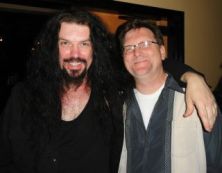 The studio had changed format three times during the making of ‘Transformation’. I fired up that 2 inch tape machine and we pretty much lived this album. Tim was great to work with as the dynamic as making a prog album breathed. The idea was that we’d both have to be ecstatic about everything. We both had great license to express ideas and he had the kind of trust for my delivery that would make me very conscious and attentive to his vision. We’d always get around any difference of idea by simply doing both. A progression may arise in the new, and we’d look at each other real fast both thinking I want that lead! This is how a song might get slightly longer. It wasn’t one or the other. We were trading off by the end. Here’s an example of what I mean by, in the new. We’d first put a piano into a sequencer before recording the actual part. One time I was playing the sequence back to check a thing and Tim said something and I turned and said “Huh?” and in that time, the sequence had looped. This was supposed to just be a one-time segue between progressions, but when it looped, the best part was the change from the last cord to the first. And this had to become its’ own progression. That turned out to be one of the most intense parts of “Apocalyptic Visions”. Tim was so gracious and open and encouraging to the energy that it became feverish. This is how the album took a life of its own and we’d just keep it going to the absurd from a practical stand point. We didn’t care.
The studio had changed format three times during the making of ‘Transformation’. I fired up that 2 inch tape machine and we pretty much lived this album. Tim was great to work with as the dynamic as making a prog album breathed. The idea was that we’d both have to be ecstatic about everything. We both had great license to express ideas and he had the kind of trust for my delivery that would make me very conscious and attentive to his vision. We’d always get around any difference of idea by simply doing both. A progression may arise in the new, and we’d look at each other real fast both thinking I want that lead! This is how a song might get slightly longer. It wasn’t one or the other. We were trading off by the end. Here’s an example of what I mean by, in the new. We’d first put a piano into a sequencer before recording the actual part. One time I was playing the sequence back to check a thing and Tim said something and I turned and said “Huh?” and in that time, the sequence had looped. This was supposed to just be a one-time segue between progressions, but when it looped, the best part was the change from the last cord to the first. And this had to become its’ own progression. That turned out to be one of the most intense parts of “Apocalyptic Visions”. Tim was so gracious and open and encouraging to the energy that it became feverish. This is how the album took a life of its own and we’d just keep it going to the absurd from a practical stand point. We didn’t care.
Before AEP went more digital, the mixing sessions for ‘Transformation’ were for me, not only the last, but the most intense of the days of up to four people at the console with rehearsed cues and charts. This is another art form all together and a lost one. Where it’s nothing less than choreography to mix on a board, knowing whose hand will go under whose and how to step to the left without landing on another one's foot. We’ve actually conked heads before we got it down. I’d spend a week building a mix, and then everyone would have to get their part down that weekend. There was no automation in here then, so if anyone blew it, we’d have to start over. :-D These were performances. Funny how you can ask a simple question and get me remembering all these things. It’s been a while since I recalled that.
And what I was doing before all of this, did have an impact. As you know, I come from a more harder-edged background and influence. Between recording clients and keeping up with things, I’d demo my work. My album took 30 years to make. Five, once I really did it, but it took about ten tries. Each time, I would either change the set or direction over time or in the time I’d get to work on it, I’d have grown just enough to make me think I could do it better. There is some contradiction to my choices and paths and to be really honest here, I feel like I’m just now getting a clue to what it’s all really about. And that’s liberating in some ways, because I’m becoming more interested in the root of things. This alleviates me of what I’m finding as the less relevant. In all there is to be concerned with, I ask myself more and more these days why I do a thing. There’s where I find such a root.
That’s a little reflective I suppose, but it goes to the root of the question of impact from prior work. I’m a rocker who loves prog. I appealed to and brought out the edge in Tim’s art and he dug it. He also took me a distance I may have not otherwise gone with anyone else for any one album, then two.. Speaking to such length as these albums go, I got to experience the dynamics that comes only when working with others and somehow, I carry this over into my own. Tim and I are able to look at each other and get that same smile with ‘Faithscience’ as with ‘Transformation’. ‘Faithscience’ is also what we call a full on. Me or any of Tim’s friends know his strength of character and he does not miss life. A fine soul and we know a road.
Why the name Mark Dean’s Caldera? Where did that come from?
- I like watching shows about the cosmos and such, and on the same channel, I caught this show all about calderas. There are three main ones and one of course is Yellow Stone. Studies showed that a lake there was rising and moving off to one side. They go off about every 60,000 years. There’s so much rock above them that the magma gets trapped and expands outward. I suppose it’s the idea of something culminating for so long. And it worked well with my then studio logo which was kinda like a seismograph. It used to be called Caldera Studios. I just switched the name around. I was gonna go by Pinwheel for a while too. But, something about a countdown to a big one. I also used to live life like that too, but every day’s the big one these days. :-).
This was when I decided to do the solo thing too, but for some reason I wanted the name to have a band feel. I’ve been considering dropping the Mark Dean or the Caldera and just going with one or the other. Like with Rainbow after the first album. I have to remind myself that Caldera is not the name of the album. I still think of it as a debut title. I’ll probably just use it once.
What was your recording process? What was your way of actually working?
- I hear most of the parts to something when I’m listening to a single instrument. I’ve always written that way too with the exception of actual lyrics, although the delivery of a vocal and melody often comes instantly.
So, when I sit down with a guitar and a song arrives, I’m hearing the drums and the rest. Drums go down first, which I’ll come back to in a bit. I always preferred to have the bass done before I track guitars so that I’ve got the feel of the bed track while playing the guitars, but I found that if there’s no other reference like a scratch track, the bass strings might bend slightly sharp and I wouldn’t know it until I went to record the next instrument. I tune low. So, at least some guitar would be second. Some scratch tracks ended up being keepers.
Since I was also the engineer, I’d often play out every other progression per take, to minimize the task of punch ins. I’d have a sec to get situated. I split the bass signal in 5 directions and use first generation Line 6 Pods for everything electric. And with bass, I use up to 3 at once. One for the low end which gets less tube drive for more body and less farts. And the upper Pod gets driven pretty hard. Then there’s a third. This one is the guitar Pod with a 50 watt Marshall setting. I overdrive it to the absurd and this one is also in stereo.
In each take for bass, these 3 Pods are going to 4 separate tracks. But the 3rd Pod, I don’t use the direct signal for, because to get the harmonic overtones, I use so much distortion that it needs to be cooled. So I then, use only the reverb from that track, but the reverb is so short that it only serves to cool the distortion while leaving the remaining harmonic resonance. And that is blended in for featured parts at about 20%. All my life, I played bass with fingers instead of a pick, until I developed this tone. It requires the right touch for it to work. Conventional playing will make a terrible mess with this tone. It’s very touchy. Because I started playing guitar at a young age, I use very light strings and playing anyone else’s guitar to me, feels like playing an acoustic. When I go for an arpeggio it doesn’t even fret. In turn, no one can play my guitars without the strings splaying off the neck. The first time they hit a chord, they just knocked it out of tune. My fingers don’t even get calluses. The process of production is in two very different and equally time consuming parts. The playing and recording and all that goes into post. The bass and guitars take the least time.
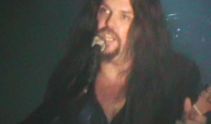 Now, the first time I ever trained equally in all instruments was when I began with the concept of doing something live as illustrated in the live performances at AEP in the video. Since then, I’ve maintained a regimen with guitar and drums and am just starting up with vocals again. But, during the recording of ‘No Man’, I’d go into practice mode for each instrument individually for the duration of all songs before switching to another instrument. All the music was recorded before the lyrics were even written. So getting the vocals down was its own dedicated season. Again, I’d have the transport controller in the live room with the mic, so to eliminate the ambient clicks of the play button, I’d do most every other line at a go. That’s pretty standard anyway, but I had to hit that mark which was usually bend down, press record, rise up, take a step back and come into it to gage placement and positioning. I could always better tell where I was before that way and pick it up with the same mindset. I was good for about two and a half hours per session for vocals and that was most days consecutively. Being producer and artist was tricky during these times, because as an artist, I had to keep up a certain energy and if you stop too long, you drop, while the producer’s role is to be objective and keep cool. I’d get the hang of it, but only if I maintained the sessions without much distraction. It would take about three days to get in the groove and if not maintained, I’d be back to zero and have to re-centre again.
Now, the first time I ever trained equally in all instruments was when I began with the concept of doing something live as illustrated in the live performances at AEP in the video. Since then, I’ve maintained a regimen with guitar and drums and am just starting up with vocals again. But, during the recording of ‘No Man’, I’d go into practice mode for each instrument individually for the duration of all songs before switching to another instrument. All the music was recorded before the lyrics were even written. So getting the vocals down was its own dedicated season. Again, I’d have the transport controller in the live room with the mic, so to eliminate the ambient clicks of the play button, I’d do most every other line at a go. That’s pretty standard anyway, but I had to hit that mark which was usually bend down, press record, rise up, take a step back and come into it to gage placement and positioning. I could always better tell where I was before that way and pick it up with the same mindset. I was good for about two and a half hours per session for vocals and that was most days consecutively. Being producer and artist was tricky during these times, because as an artist, I had to keep up a certain energy and if you stop too long, you drop, while the producer’s role is to be objective and keep cool. I’d get the hang of it, but only if I maintained the sessions without much distraction. It would take about three days to get in the groove and if not maintained, I’d be back to zero and have to re-centre again.
In practice, it gets easier and more natural with less mental notes with a big difference in the result. Once it really got going, I’d review the earlier stages and wanna do some stuff over. I’ve been on the other side of the window many times and have a sympathy for performers and know the energy rhythms and when not to echo the artist’s own thoughts, but I had never spent this much time on the other side and have since gained a better knowing of how important it is to keep it going when it’s hot.
Until I recorded No Man and Apple of the Bitch, (Vince’s band) in this room, I’ve never been thrilled with the drum tones I’d been getting. In working with songwriter clients, it was economical and more convenient to program drums. There were two things that made me not wanna do that on my album. The main reason was that even if I were to get great tones, one can easily acquire the same and the other reason is that, no matter how well it’s done, it does not sound the same as me playing with my kit and my hits in my room.
So, I set out on a mission. One that gave me a migraine headache for two months by the time it was done. I’d mic up the kit and sample every conceivable hit I would ever do for each drum and build a programmable me. And it worked. Each sample of each hit was not just for each drum, but for each associated mic relating to that drum. So if I were to eliminate every directed mic and leave up only the room, I could play a something from it in the control room and it was identical to the sound of the kit being played with no mic in the other room, because it was the other room. In a store bought module or program, you might get your choice of 99 different snare drums. Mine had only one, with 99 different hits, all mine. I finally built something that was exactly what I’d play, with the tones I’d otherwise need a world class studio for, at the time.
Now, I had a rule about this. I’d have to play out on the kit first, so that I wouldn’t tap out something I couldn’t actually play. This is another thing that attracted me to the idea of doing the video and the live solo at the end it.
Since then I have found out how to get even better tones tracking with the live kit, which is what I’m currently doing. I recently embarked on my latest mission of tuning the drum heads to the actual note of the wood of the drum when hitting it with my palm. It sounds like God now and I’m very happy with it. So far, I’ve laid down about five or six songs for the next thingy I’m doing.
What inspired each song and what were you trying to achieve?
- Oh my. ‘No Man is an Island’ is the result of about my 10th attempt to make the album I wanted. About half of the 12 songs I’m working on now, were going to be on this first release. But, I made a left and went back full circle to something closer to where I began. The music for “King’s Row” for example, was written in about 82. There was a bit of an edge to life by the time I commenced with what would be the album as it is now. This translated to the song selection and again, the lyrics had not been created yet. I’d pace the floor on a hot night in a feverish stream of consciousness and spout either a volume of anything I found relevant in my life in the immediate, which was and is difficult for me to capture and document, or I’d go into nonsensical syllables that might sound similar to someone speaking in tongues. Either would shape the feel significantly as to whatever it was I’d need to chase down.
In the former, I’d not intended to keep any of what I was saying, because my intent at the time was not to work or even write. But, I did document one out of a willion and even then I’m thinking, ‘Yeah, right’… I’d go somewhere beyond and into places I’d not signed off with myself for writing about.
I’d look at the page weeks later and it would confront me. I’d think I was writing about one thing, and it turns out there’s more to it. I found it more interesting to try to figure out what I was saying than the stuff I was turning out when I sat down with pen in hand. It made me go places I didn’t feel ready to go. Nothing like I thought it was gonna be.
Some of this process is largely due to the time it took to make the album. It crawled through my growing as an artist and by the time I caught up to it, the very meanings of the songs had evolved. It painted a picture that made me not only feel the need to augment the album by about 20 minutes for it to say something closer to how I feel now, but I also felt it necessary to live by and stand by it.
It also made me change the order or the set list. It originally ended with “Looking for Conscious”, which was meant to be the sound track for the back story of “Reptilian Girl”. But, when I removed that premise and connected it to my life at the time, it told an alarming story to me. The music had abandoned any preconceived notion or concept and patched itself directly to present realities and the whole thing became more honest with me than I was.
I saw an interview the other day with a kid I won’t say who. He no longer performs some songs, because he no longer feels that way. That’s like denying yourself. If you truly felt that way at the time, it plays. Some of my favourite artists agree.
So, there was a point where I thought I could no longer relate with the album, but that’s the very thing the album became about. It said, let me go and become oblivious to anything applicable to progress.
 I knew pretty early on that there was a theme depicting a fight of sorts, but it started spewing and punching at circumstance. I thought, this is not reflecting the things in life I’ve since come to appreciate more. But, rather than create something else that appealed to the far fluffier place I found myself, I thought hey, if someone can wade through and still say something like this in the end, it means more and might even reach someone.
I knew pretty early on that there was a theme depicting a fight of sorts, but it started spewing and punching at circumstance. I thought, this is not reflecting the things in life I’ve since come to appreciate more. But, rather than create something else that appealed to the far fluffier place I found myself, I thought hey, if someone can wade through and still say something like this in the end, it means more and might even reach someone.
So, here’s how it actually ended up, for me. It plays out in three parts. First part, begins with “God Help Me” This has to do with isolation or the sense of such. Some kind of determination that says I’m going in, although with a feeling that says, you can’t go home. That place where one thinks they’re the only one who feels like they do, an inability to reach out, the expectation of misunderstanding.
“Reptilian Girl” moves into internal animated fantasy playback of what the soul or core is trying to tell. It takes place as a dream. Even in this response I see it play as an unconscious reaction to the song that came before it, which is funny, because very little of it is borrowed from any actual sleeping dream. I think it’s about the idea of being terrified by what you want, it’s other worldly. Happening upon someone quite alien who is able to immediately access and extract your core and show it to you while at the same time imprinting on you at a rapid pace. Sends you running until you find yourself seeking this one, once you find out it that was just a dream. There’s an elaboration on it on my web site.
“Kings Row” is an example of what happens when I set out to write something that means a thing to me, and then opens up into something more than I intended which becomes the thing more worth writing about. It seems to no longer be about its origin, but would not have taken place if not tapped from there. It’s got a surreal thing going through the bashing. This one plays out into about five directions and so tells about five different stories. An artist who inspired me all my life said one day, “I can get five people giving me different meanings of a given song of mine and they’re all correct”. I can feel funny breaking it down like this, but I think once one offers up an artistic work, it’s no longer theirs to say what it means. So, I get to give my take on it just as anyone else might. My favourite writers have a way of being vague enough to let others place their own vision on it, while at the same time, deliver a universal root that’s accessible and well worth the chase.
If there’s one song on the album that means the same thing to me now, as when I wrote it, it’s “Love in Vain”. And for that reason, I must honour the personal in all of us.
Do I Care.
There has been a time or two, where I found it’s a good idea to ask this. One may find themself saying the same things they said ten years ago without ever having asked that and come to find, maybe I don’t feel like I did ten years ago. :-).
Maybe I believe something different now. “Do I Care”, is a song that never really does answer that very question, while at the same time, pokes fun, adopting the adage “The older we get, the less we know”. This one does not ponder to ask why. It doesn’t even ask why not, although it might think it knows. Still, there’s an intensity going on here and the need to question the question, Do I Care. Just the beginning of gaining some distance from a narrower band of focus. Valid or otherwise.
But, it is the conclusion of part one of the album.
By the second part, its taking its first real look at what questions in the silence of night can bring and a gentle glimpse enters with the first half of “The Gypsy Ears.” (A play on words for Gypsy Years.) It’s an instrumental piece, sort of. Well, it has no lyrics anyway. No distractions here. The second half is the first of several awakenings to come. It does have the one word in the song actually, that simply says, ‘Hey’ as if to say, ‘Just a sec here’ or ‘Huh?’ This is a more serious questioning and first cry by what I like to call moon lit night flyers.
The core and centre piece of part two is “Across the Way” For me, it’s a love story, as then became the album itself. Isolation gives way to having been reached. A potent element to introduce to an otherwise bloodshot work. It comes in as if to say, “Hold on to this. You’ll be needing it” This is one of the two I felt was needed to augment this album.
Then, it’s back in the trenches with whatever had come before and down we go. A resolve with all emotion, aggression and momentum we’ve ever gone in with. We return to the edgy with a bit of that internal animated fantasy playback from Reptilian Girl, to help it along. Something like a chase scene in “Eluding Connie at Trixie’s Gig” All the sudden we find where Hackle Zup has just ran into the crowd at Della Robia’ show to lose Connie.
“Climb The Cliff” takes a look at the disillusion that occurs when one has been cut down by one of their heroes. It’s a lash out with no regard for the idea that in the day of a life for such artists, if their positions were switched, there could exist a moment in time where the crushed one did the crushing. The song is not sympathetic and therefore somehow evokes sympathy for the perceived hero. There is a review on my site that calls this song “Ugly” Trust me, it is. My pussy got all hurt on this one and another one of my favourite artists once said, “Artists that influence you are to be admired, not always met.” The truth is, you never know what’s going on in someone’s life and there can be a wrong place and time. Some, remain dicks in my book of life, and many agree. Others, might be rude, and later on the way out of a crowded room stop, look me in the eye, shake my hand, lean into my ear, and say, “I’m so fucking tired” This one I say said, it’s cool, man. I’ll just say, it was easy to understand that one’s circumstance that night. We later worked together. But, “Climb the Cliff”, was one where it’s the other way around. ‘You caught me at the wrong time as well’ Sad.
 I was getting pretty pissed off bout this time in life about a few things. And although that energy was transferred into the past, the song’s placement in sequence served perfectly to test the repeating of history, given a song like “Across the Way”, which had gone before. Songs that were written, prior to “Climb the Cliff”, I put ahead or after, just so I could look again. The theme here would be, what have we learned? What’s the diff? Mmmmm? What do we remember? I also chose “Climb the Cliff” as a title because when I was a kid, I had to literally climb a cliff to escape an ocean tide.
I was getting pretty pissed off bout this time in life about a few things. And although that energy was transferred into the past, the song’s placement in sequence served perfectly to test the repeating of history, given a song like “Across the Way”, which had gone before. Songs that were written, prior to “Climb the Cliff”, I put ahead or after, just so I could look again. The theme here would be, what have we learned? What’s the diff? Mmmmm? What do we remember? I also chose “Climb the Cliff” as a title because when I was a kid, I had to literally climb a cliff to escape an ocean tide.
“50k Wattsssss”. Hmmm. Here’s where you’re going as far as you can in the world as you’ve known it. Electric metaphors with one hand on a go button, and a resolve to the idea of a countdown that’s probably the most worthy of the title Caldera on this album, we blow forth for all we feel we’re worth. Yeah, hit the button alright, but here’s where tapestry begins to unravel.
Part three, begins with a kind of, or near death. The darkest point, conveyed by the loop that is “Looking for Conscious”.
Then, awaken right into spiritual battle in the final track “Oh My God” and it’s the undeniable. The unmovable in you that goes before to lift, turn and bring it down!
No, ‘What the hell just happened?’ No, ‘Oh my God’ Just somewhere you’ve never been. Abyss, perhaps. Then it gets a little more cosmic.
Now, I suppose I should mention that by now, the album is on the other side of something. Sliding in a cave. This is where you reside, up on some hill. Outside is a landscape of immense beauty…
A band in the distance. The acoustic guitar with no reverb will be the one raising an ear to the sound. The banging of drums and we find our love return here in one of the most inspirational sessions for my part, in the entire process of the journey and it’s recording. Let me say one thing about “Across the Way” as it reprises here, if I may. The finest stuff in this world will travel after it’s gone, to bring water and life to a barren planet. They will not remember us. Why should we ask them to with some launched golden disc? We are them. This is how I feel toward my loved ones. “Hold on to this” becomes “This is how it’s done”
I’ve never been as close to my own work as life would have me, until I made this album.

